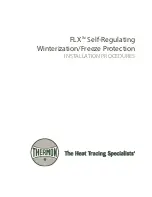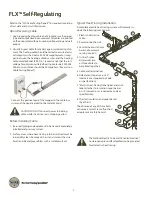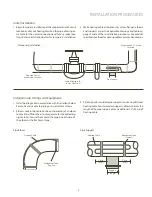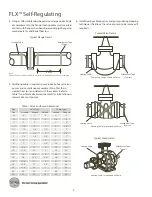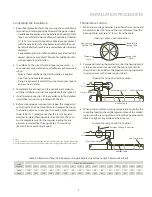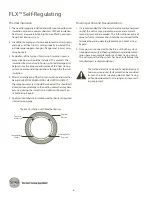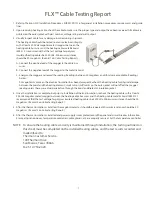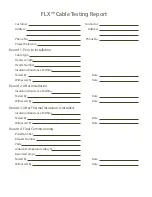
FLX
TM
Self-Regulating
Typical Heat Tracing Installation . . .
A complete electric heat tracing system will typically in-
clude the following components:
1. Electric heat tracing
cable.
2. Power connection kit.
3. Control thermostat (may
be remote ambient
sensing control.)
4. In-line/T-splice
kit (permits two
or three cables to
be spliced together).
5. Cable end termination.
6. Attachment tape (use on 12”
intervals or as required by code
or specification).
7. “Electric Heat Tracing” label (peel-and-stick
label attaches to insulation vapor barrier
on 10’ intervals or as required by code or
specification).
8. Thermal insulation and vapor barrier
(by others).
The absence of any of these items
can cause a system to malfunction
or represent a safety hazard.
FLX
TM
Self-Regulating
Before Installing Cable . . .
1. Be sure all piping and equipment to be traced is completely
installed and pressure tested.
2. Surface areas where heat tracing is to be installed must be
reasonably clean. Remove dirt, rust and scale with a wire
brush and oil and grease films with a suitable solvent.
Refer to the “FLX Cable Testing Report” for required recording
of test data and circuit information.
Upon Receiving Cable . . .
1. Upon receiving heating cable, check to make sure the proper
type and output have been received. All cables are printed
on the outer jacket with part number, voltage rating and watt
output.
2. Visually inspect cable for any damage incurred during ship-
ment. The heating cable should be tested to ensure electri-
cal integrity with at least a 500 Vdc megohmmeter (meg-
ger) between the heating cable bus wires and the heating
cable metallic braid. IEEE 515.1 recommends that the test
voltage for polymer insulated heating cables be 2500 Vdc.
Minimum resistance should be 20 megohms. (Record 1 on
Cable Testing Report.)
Connect the positive lead of the megger to the cable bus
wires and the negative lead to the metallic braid.
CAUTION: DO NOT connect power to heating
cable while it is on reel or in shipping carton.
The National Electric Code and Canadian Electrical
Code require ground-fault protection be provided
for all electric heat tracing.
6
5
4
8
7
1
2
3
2

